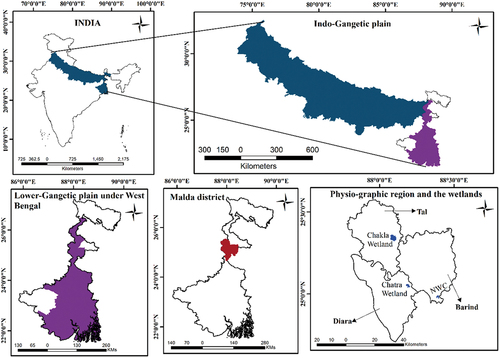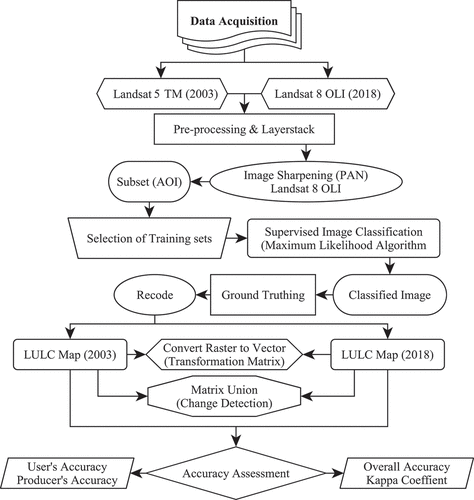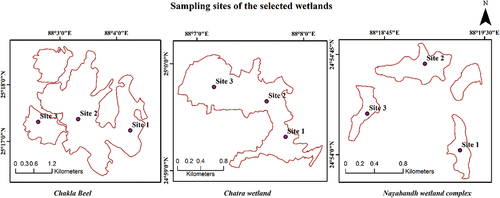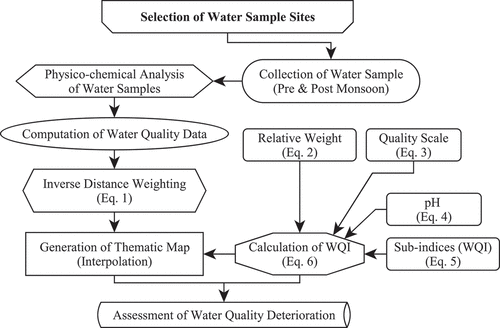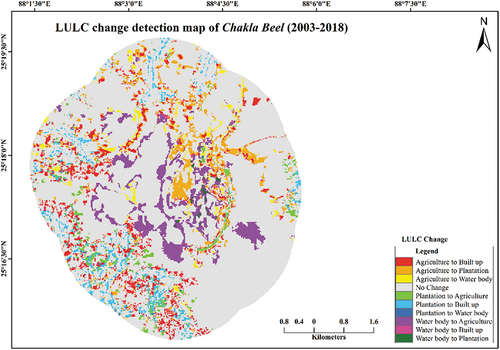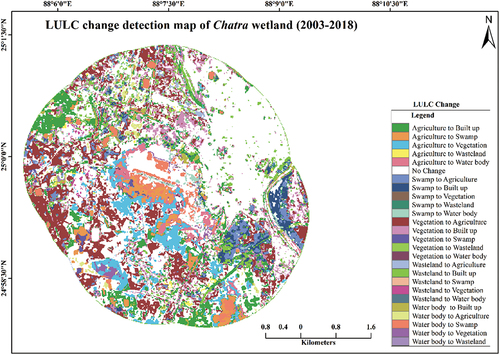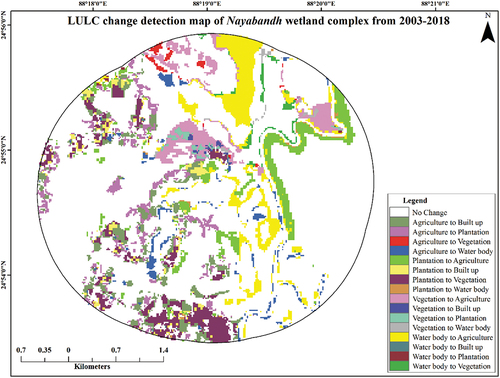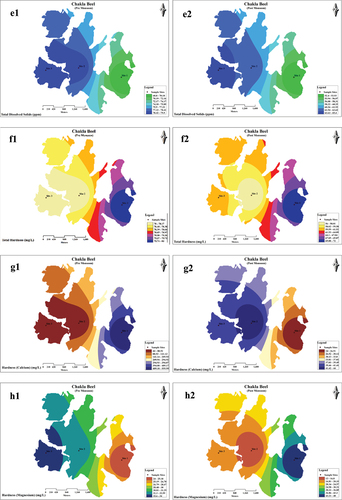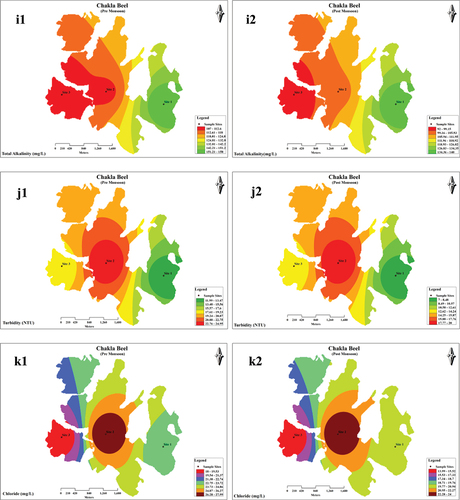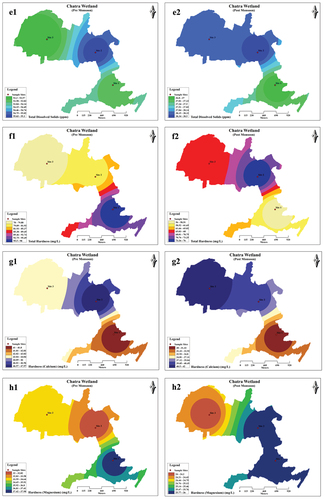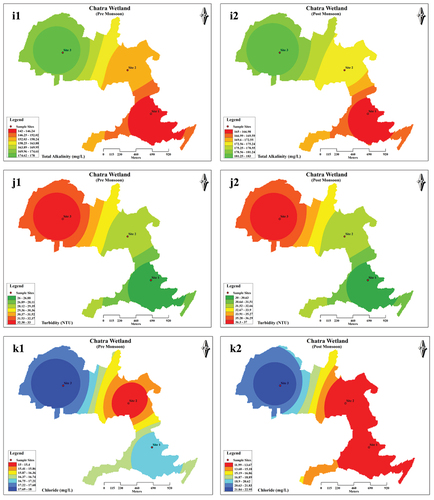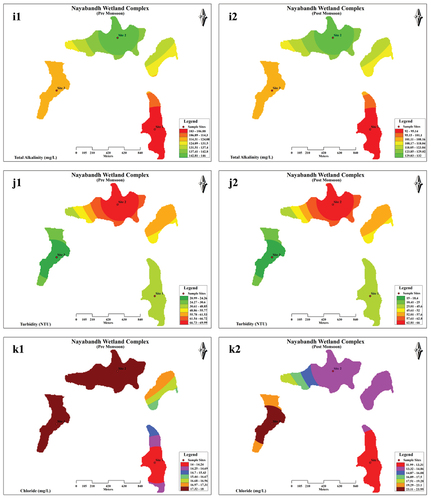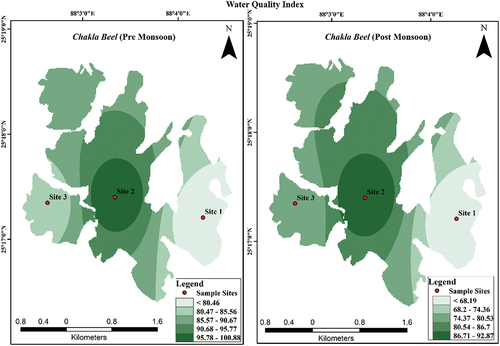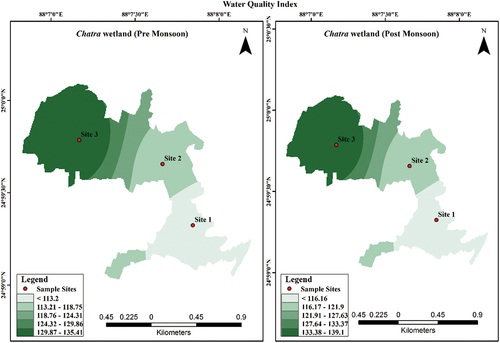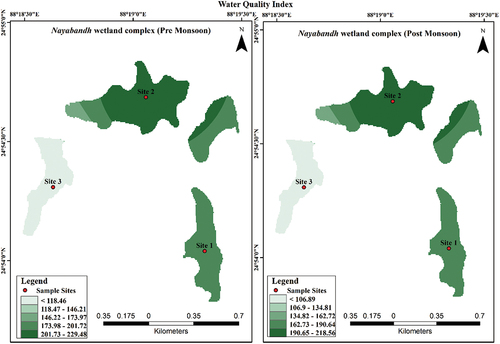Figures & data
Table 1. LULC classification scheme.
Table 2. Satellite data used in the study.
Table 3. Error matrix and total accuracy (Chakla wetland).
Table 4. Error matrix and total accuracy (Chatra wetland).
Table 5. Error matrix and total accuracy (Nayabandh wetland complex).
Figure 5. Land use land cover of Chakla Beel in 2003 and 2018.
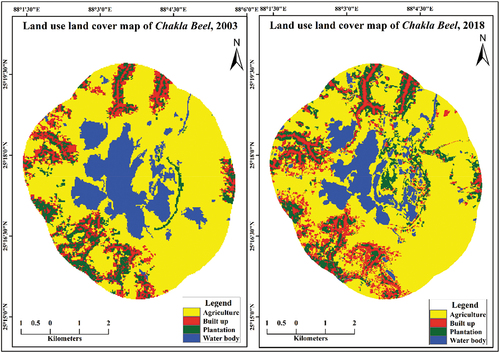
Table 6. Area under different classes in 2003 and 2018 (Chakla wetland).
Table 7. Transformation matrix of Chakla wetland.
Figure 7. Land use land cover of Chatra wetland in 2003 and 2018.
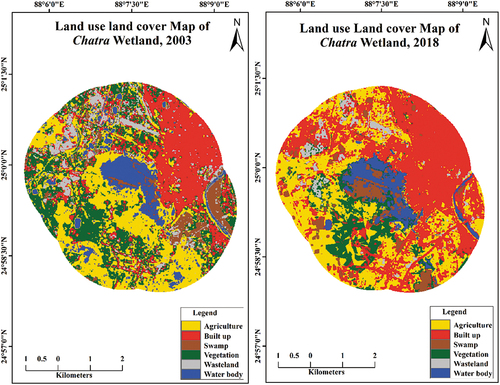
Table 8. Area under different classes in 2003 and 2018 (Chatra wetland).
Table 9. Transformation matrix of Chatra wetland.
Figure 9. Land use land cover of Nayabandh wetland complex in 2003 and 2018.
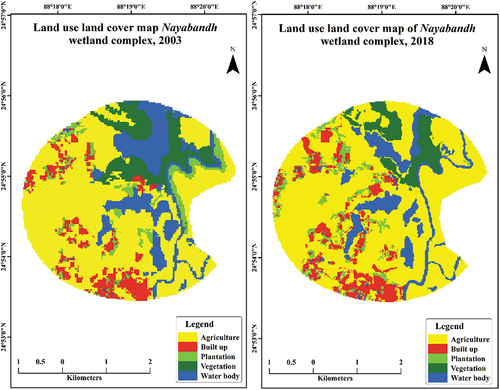
Table 10. Area under different classes in 2003 and 2018 (Nayabandh wetland complex).
Table 11. Transformation matrix of Nayabandh wetland complex.
Figure 11. (A1 to k2): Spatial variation of water quality parameters of Chakla Beel during pre- and post-monsoon. 1= pre-monsoon, 2= post-monsoon, a-Depth, b- Temperature, c- pH, d- Electrical conductivity, e-TDS, f- Total Hardness, g- Hardness (ca), h- Harness (mg), i- Total Alkalinity, j- Turbidity, k- Chloride.
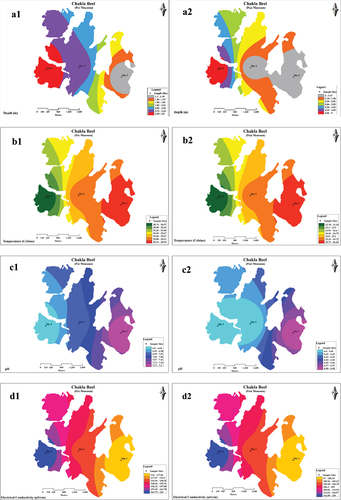
Table 12. Standard limit and assign weights.
Table 13. Physico-chemical concentration values of water quality parameters at selected sites of the wetlands.
Figure 12. (A1 to k2): Spatial variation of water quality parameters of Chatra Wetland during pre- and post-monsoon. 1= pre-monsoon, 2 = post-monsoon, a – depth, b – temperature, c – pH, d – electrical conductivity, e-TDS, f – total Hardness, g – hardness (ca), h – harness (mg), i – total alkalinity, j – turbidity, k - chloride.
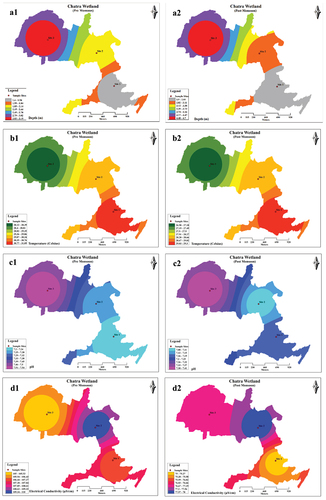
Figure 13. (A1 to k2): Spatial variation of water quality parameters of Nayabandh wetland complex during pre- and post-monsoon. 1= pre-monsoon, 2= post-monsoon, a Depth, b – Temperature, c – pH, d – electrical conductivity, e – TDS, f – total hardness, g – hardness (ca), h- – harness (mg), i – total alkalinity, j – t urbidity, k – chloride.
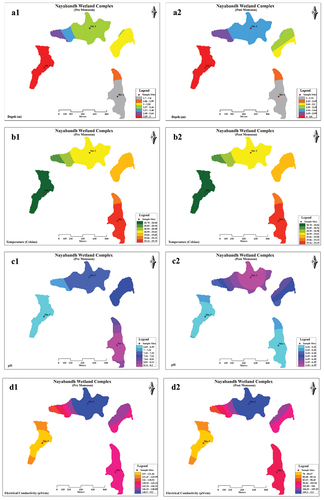
Table 14. Water Quality Index (WQI) of selected sites of the wetlands.
Table 15. Water Quality status of selected sites of the wetlands.

